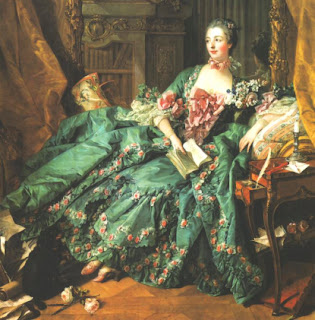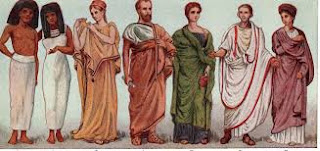Elizabethan Era
Elizabethan
Era was the period under the reign of Queen Elizabeth I. This period was known
as the ‘Golden Age’ in English history because of the flourishing English literature,
art, and poetry at the time. This was also the time that bought many changes in
clothing and fashion, the time when fashion became an important part of everyone’s
life. Clothing and fashion was no longer just a luxury to indulge in, but a
symbol of every individual’s identity in the society.
During Elizabethan
era, class segregation and social hierarchy became an important element of the
society. It was a fashion conscious age where men and women alike were concerned
about the latest fashions. Clothing became such a significant thing that there
was even a law related to it. These laws
were passed to maintain the social structure, and stated the type of colours and
clothing an individual was allowed to own and wear. These laws were called the ‘Statues
of Apparel’ and were enforced by Queen Elizabeth herself in 1574.
It was all
about proper division of class. Everything about a person’s apparel was an
indicator of their social status; from the style of clothing to its colour and
material, it was all about the rank and social standing.
Higher the rank, the richer the colour and
materials of clothing. The most rare and expensive materials were used by the
royals and aristocrats. Silk, satin, velvet, damask, taffeta and furs were the
most extensively used fabrics by the upper crust of the society. Along with these
materials, the clothing’s were layered with brocades, laces, and even gold and
silver embroidery. Precious gemstones and gold and silver buttons were also
very popular.
These clothing
restrictions did not end with the dimensions of upper class and the lower
class. There were certain colours and materials that were only permitted to be
worn by the royalty. Only royals could wear cloth of gold and ermine. Colours
like purple and crimson red were only worn by the nobles and royalty.
People
belonging to the lower classes wore clothing made of materials like wool, linen,
and sheepskin. They were only allowed to wear colours like beige, brown, gray,
yellow, orange, and pale blues.
During the
Elizabethan era, women’s clothing was elaborate and luxurious. The clothing
generally consisted of many layers, starting with the thin undergarment made of
linen called chemise. Over the chemise came the corset, commonly made of
whalebone or wood. Then comes the farthingale and the petticoat. Farthingale was
made of hoops to give a dome like structure to the skirt. Along with this came
the kirtle, the partlet, ant the gown. Gowns had a split in the middle to
reveal some part of the kirtle. Then comes the stockings, the ruff collars, and
the stomacher. The outfits also included the embroidered shoes, the hats, and
cloaks.These layers depended on the social standing of the women. Common women
used to wear fewer layers for easier function. Simple clothing with less
restriction made it easier to work in.
Men’s clothing
also incorporated some major changes during the Elizabethan period. The similarities
between men’s and women’s fashion during the time was that the men’s clothing
also consisted of quite a few layers. Their clothing included loose-fitting
shirts that gathered at the cuffs, knee length puffy pants or breeches with
stockings under them, doublets made of wool or leather, ruffs for wrists and
neck collar and elegant capes or cloaks. Men who belonged to the upper class
wore clothing made of fabrics like silk, taffeta and wool. Their clothing also included
precious jewels and gemstones and embellishments like feathers and brooches. Men
from the lower classes wore simpler clothing made of tougher materials and pale
natural colours.

















































